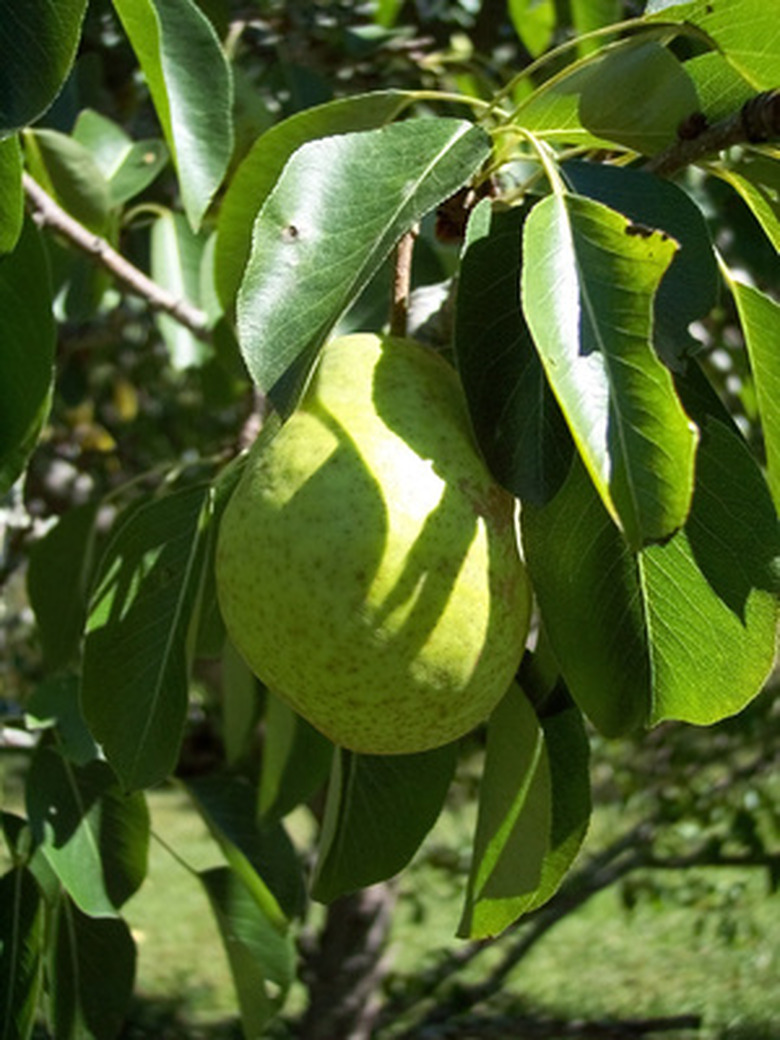Fruit Trees That Like Wet Soil
Most fruit trees will grow poorly, if at all, in wet soil. Their roots will die from lack of oxygen if water takes more than 24 hours to drain through the root system. Occasional floods probably aren't lethal, and trees planted on mounds will often survive. For a truly boggy area, choose a fruit tree that is genuinely tolerant of those conditions.
Pears
The common European pear and its varieties such as Seckel, Comice and Bartlett are quite tolerant of wet soil, though it would prefer a deep, moist, well-drained site. Plant on a mound if possible. It is closely related to both apples and quinces. The fruit should be picked when slightly green and ripened inside. If allowed to stay on the tree, fruit often drops off before ripening fully, and is difficult to pick without bruising. Pears need to be pollinated by other pear varieties, so plant two trees or buy a single tree on which two or more varieties have been grafted.
- Most fruit trees will grow poorly, if at all, in wet soil.
- If allowed to stay on the tree, fruit often drops off before ripening fully, and is difficult to pick without bruising.
Persimmon
Persimmons are native to both Asia and the Americas, but it is the Asian species that has been cultivated for centuries and that is most widely grown. The many varieties available can be divided into two groups, those whose fruit is astringent until soft and jelly-like and those with non-astringent fruit. The astringent varieties are usually adapted to cooler areas. A non-astringent variety can be eaten when crisp, like an apple, and is usually grown in warmer climates. Persimmons will often take some drought as well as wet soil, though the ideal soil is deep, moist and well-drained.
Juneberry
Juneberry (Amelanchier alnifolia) is also known as serviceberry, saskatoon berry and shadblow. The fruit is a blue berry that is loved by both birds and humans. The small tree will spread by suckers to form a thicket and grows in most soils, wet or dry. The white flowers are attractive in spring.
- Persimmons are native to both Asia and the Americas, but it is the Asian species that has been cultivated for centuries and that is most widely grown.
- Persimmons will often take some drought as well as wet soil, though the ideal soil is deep, moist and well-drained.
Apples on Certain Rootstocks
Like most fruit trees, favorite apple varieties are grafted on to apple species that have root systems that are either stronger or smaller than that of the original variety. Some produce dwarf trees, some semi-dwarf. Certain rootstocks are more tolerant of wet soil than others, the apple species Malus borowinka, M. antonovka and M. ranetka among them. Though not commonly used, the swamp crabapple, M. fusca, from western North America, will produce a bog-tolerant apple tree when used as a rootstock.
